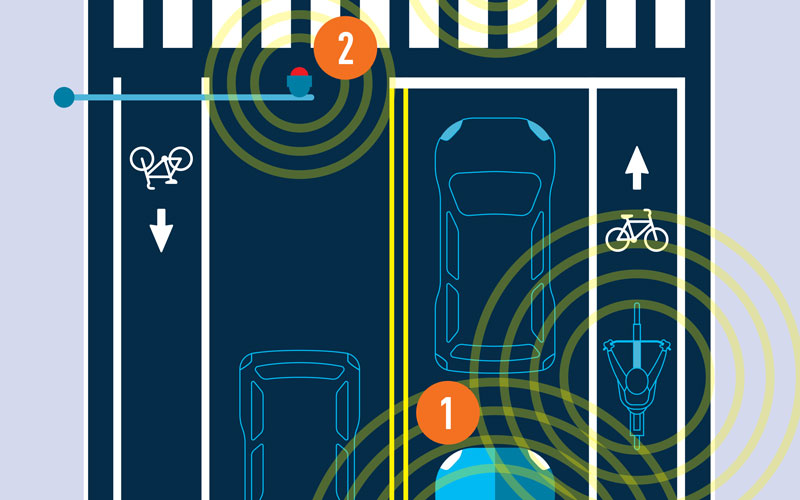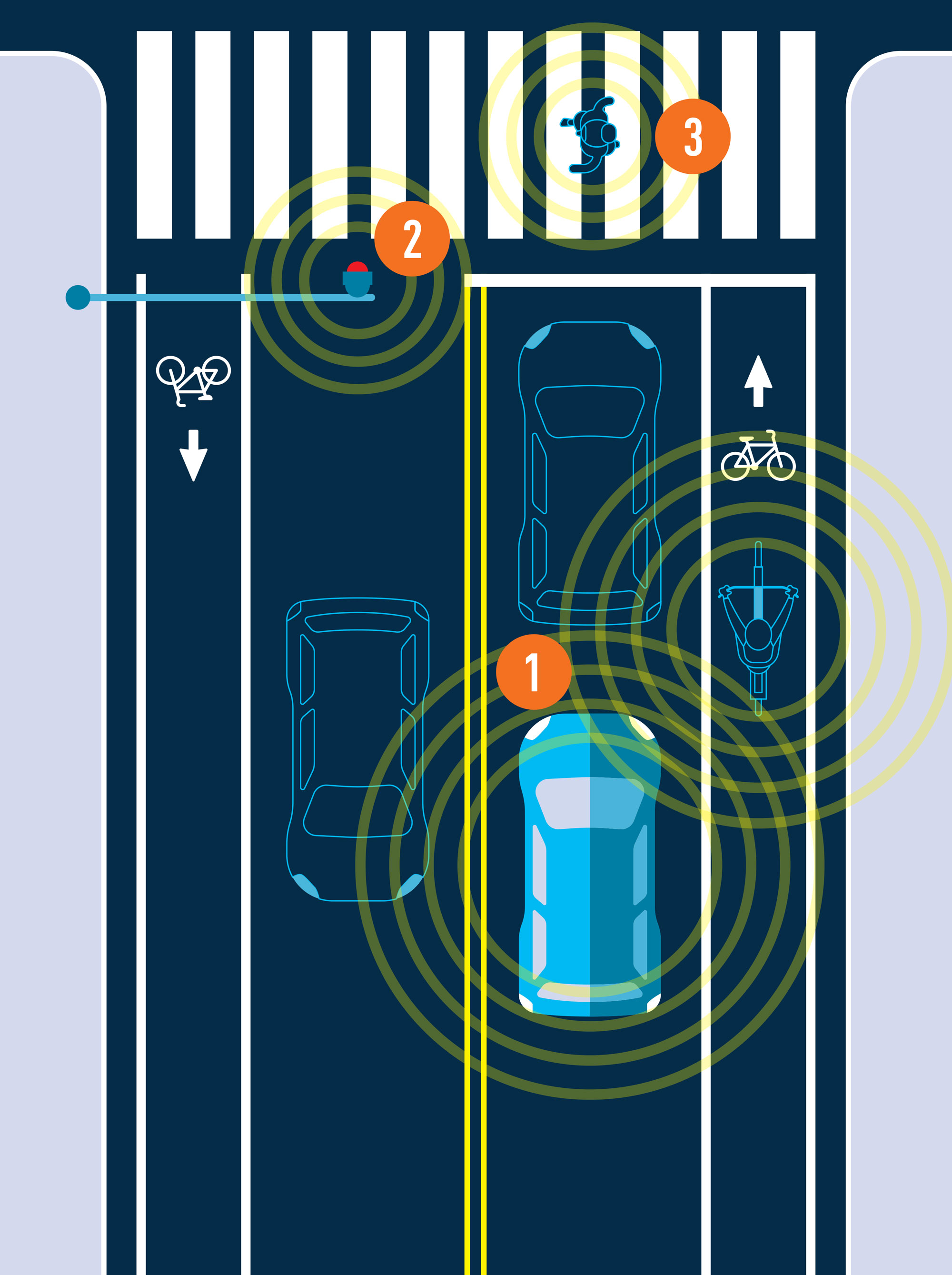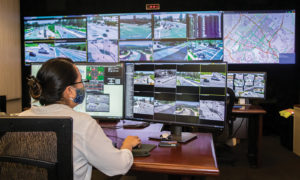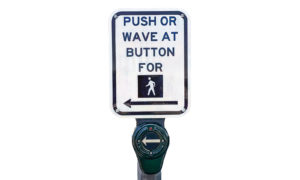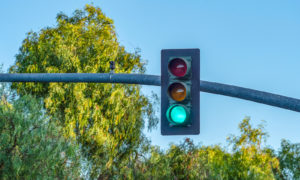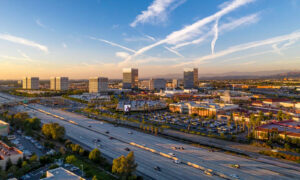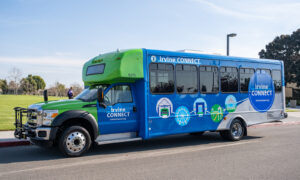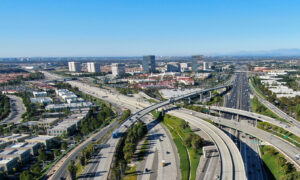Irvine always has planned for the future.
Its 260+ parks were planned ahead of time. Its 540 miles of recycled water pipes were planned ahead of time. Its award-winning schools were planned ahead of time–due to the Master Plan.
Now the city is planning for the future of connected vehicles, which use wireless technology to communicate with traffic signals.
Transportation Director Mark Linsenmayer says Irvine is in discussions with several car manufacturers about in-car systems that alert drivers of coming signal changes.
“You’ll have a readout in your car that says: ‘If you average 45 mph for the next quarter mile, you’ll hit that light at green’” he says.
“Or it will tell you, ‘The next light is scheduled to change in 10 seconds,’ and count you down.”
Automakers approached Irvine because it uses advanced traffic signals that can communicate with connected vehicles — and improve traffic flow.
How Connected Vehicles Work
Connected vehicles use wireless technology to communicate in three ways:
1. Vehicle to vehicle:
- alerts drivers to the locations of other vehicles
2. Vehicle to signals:
- alerts drivers when a signal will change
3. Vehicle to everything:
- alerts drivers they’re approaching a pedestrian or bicyclist

